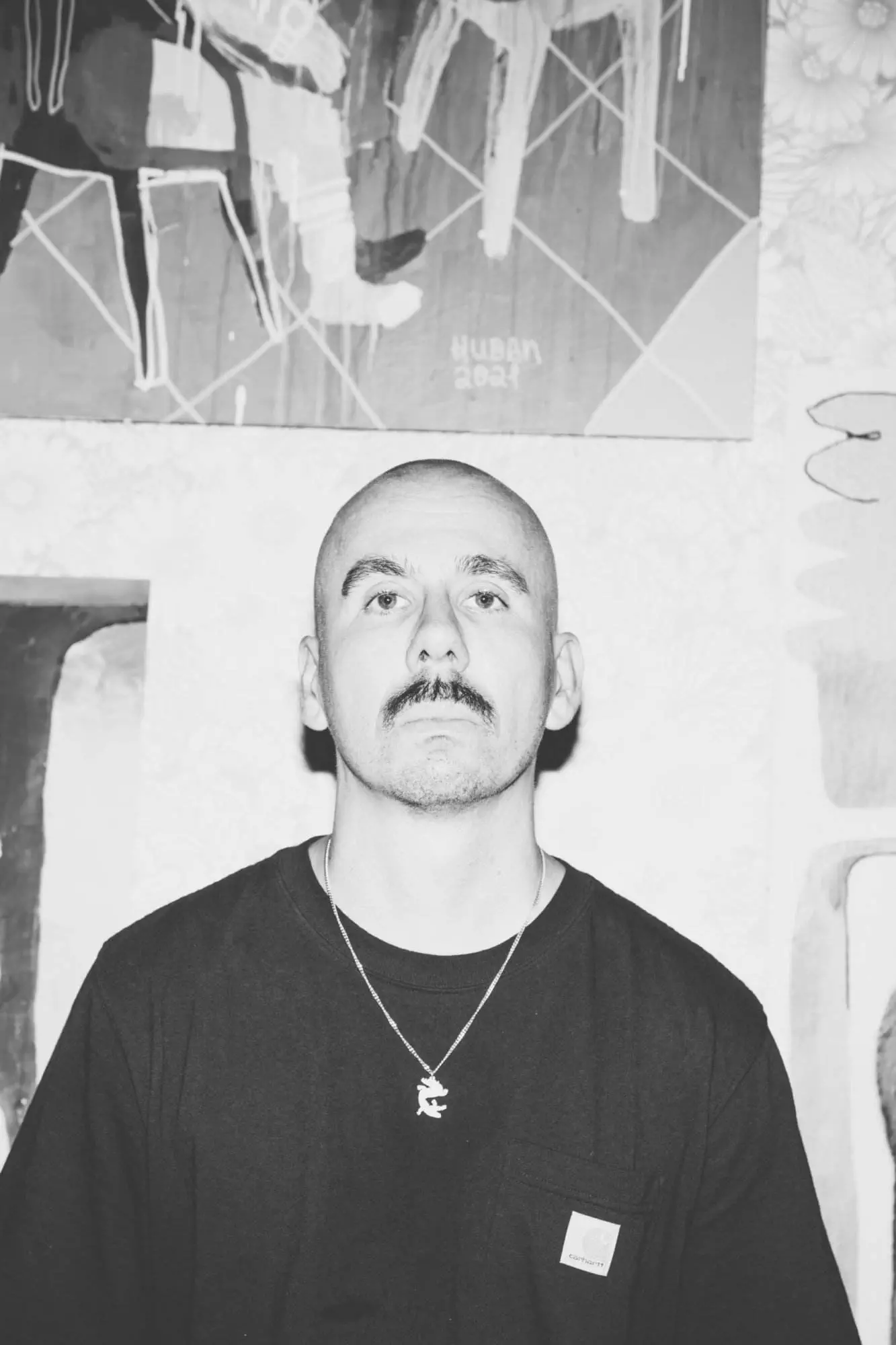Curriculum Vitae
Sebastian Kuban studied at the University of Applied Sciences in Hamburg and now lives and works as a freelance painter in Constance, Germany. He develops his pictures in a sketching process from various fragments. This results in conglomerates of zeitgeist and current affairs, subculture, fashion, video games and pop culture in general.
Formally considered, with a painting style that may seem rough or even naive at first glance, Sebastian Kuban‘s pictures are reminiscent of works of art brut. The term, coined by French artist Jean Dubuffet, describes a raw, intuitive art by mostly self-taught artists outside the academies, which moves beyond the discourses of certain art movements. However, Sebastian Kuban‘s approach is not quite as intuitive as the term „art brut“ suggests - his pictures are more calculated than they initially appear and play a double game with their supposed lightness.
The art magazine „Art“ recently noted a „contemporary renaissance of naive painting“ and that young artists such as Sebastian Kuban are increasingly using their cultural background as a source of inspiration and subject matter. Pop culture and contemporary cultural phenomena reflect the digital age, the Anthropocene and us humans of late capitalism with all their facets and absurdity in rich and vibrant colors.
Such socio-critical tendencies are not unknown in art history. In the early 1980s, the so-called Neue Wilde in Germany produced neo-expressionist, fierce and powerful paintings that were intended to turn their backs on the minimalist, rational and intellectual currents of avant-garde modernism. There were related tendencies in France and Italy. Painting became increasingly figurative again.
Subcultural pictorial elements and everyday culture were interwoven with traditional iconography to create ironic, socially critical or political images. One of the most famous examples from America in the 1980s is Jean- Michel Basquiat, who was the first African- American artist to stir up the contemporary white art scene with his unconventional style, integrating subculture, hip-hop, racism and other relevant contemporary themes into his paintings.
Sebastian Kuban‘s pictures work in a very similar way. An entangled and multi-layered web of quotations and references is spun. Signs and symbols from reference systems such as religion, mythology, typography, everyday culture or fashion are combined to create cartoon-like, playful and overly colorful images. The key strategy is the translation of culturally coded iconography into pop-cultural slang. The modern world, subcultures and their codes and pictorial techniques - such as illustrations, tags and graffiti or tattoos - are transferred and integrated into the old pictorial medium of panel painting. The diverse reference systems prove that the pictures actually only appear naïve or brut on the surface. Behind this bold, loud colorfulness lies a bitter seriousness, an exaggerated ambiguity or an aftertaste that is anything but naïve. The superficial naivety of the pictures then conflicts with their socio-critical undertones. The discrepancy between the self-confident impulsiveness on the one hand and the heaviness of the symbolism on the other draws a double bottom and additional layers of meaning into the pictures‘ agency.
Nina Maier
Art Historian
7.3.24
